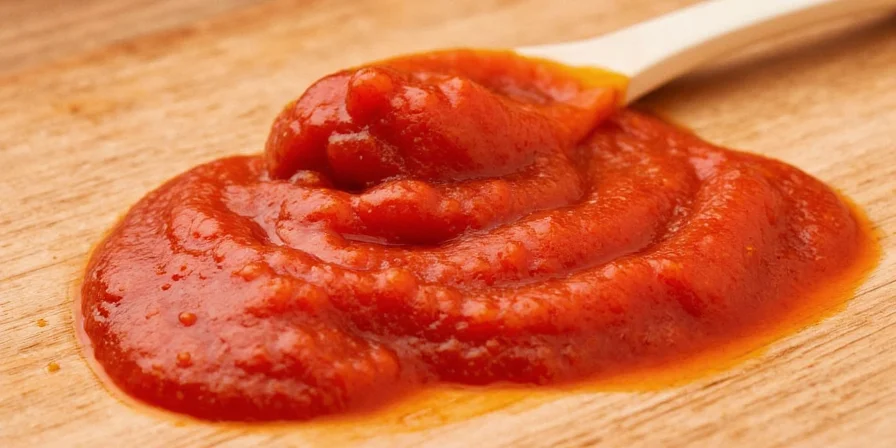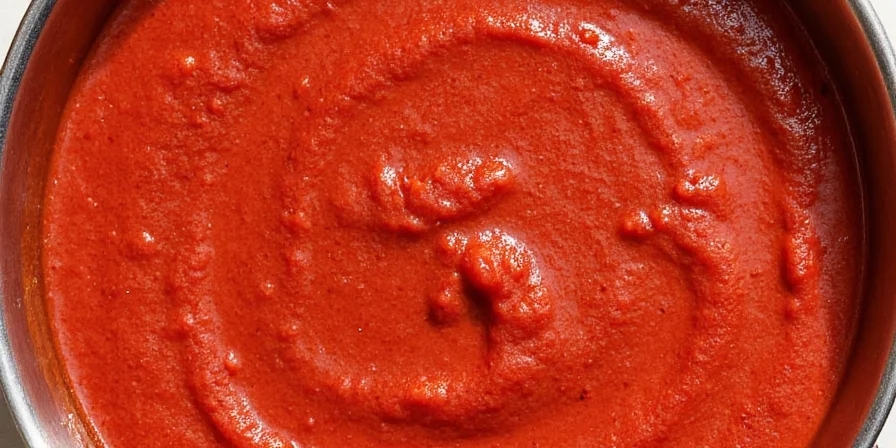Harissa Sauce: The Fiery Flavor That’s Stealing the Global Spice Spotlight
You know that moment when you take a bite of something so bold, so vibrant, it feels like your taste buds just got upgraded to first-class? Yeah, harissa sauce does that. From North African kitchens to high-end fusion restaurants in New York and Tokyo, this red-hot condiment is making waves across Global Spice Traditions. But what exactly makes harissa so special — and how can you use it like a pro without setting your mouth on fire?
Table of Contents
- What Is Harissa Sauce Anyway?
- The Holy Grail of Ingredients
- How to Use Harissa Like a Seasoned Chef (or Spice Addict)
- Regional Twists: How Different Countries Jazz Up Their Harissa
- Storage Secrets: Keep It Fresh Without Losing the Fire
- FAQs: Everything Else You’ve Ever Wondered About Harissa
What Is Harissa Sauce Anyway?
If you're new to the world of global spice traditions, harissa might sound like an alien language. Let's break it down:
- Origin: Tunisia, North Africa
- Base: Roasted or sun-dried chili peppers
- Texture: Smooth paste or semi-liquid sauce
- Flavor Profile: Spicy, smoky, garlicky, with hints of citrus and cumin
Think of it as the Moroccan cousin of sriracha — only older, sassier, and way more complex.
The Holy Grail of Ingredients
Not all harissas are created equal. What sets the good from the great? Here's a peek into the classic ingredients list:
| Ingredient | Role in Flavor |
|---|---|
| Chili Peppers (Serrano, Beldi, or Bird’s Eye) | The heat source; gives harissa its signature kick |
| Garlic | Adds pungency and depth |
| Cumin | Earthy warmth, classic North African note |
| Coriander Seeds | Sweet-spicy undertone |
| Olive Oil | Smooths out the texture and adds richness |
| Lemon Juice or Citrus Zest | Brightens up the flavor profile |

Some variations even throw in tomatoes, rose petals, or caraway seeds for extra flair!
How to Use Harissa Like a Seasoned Chef (or Spice Addict)
Here’s where things get fun. Harissa isn’t just a condiment — it’s a full-on flavor enhancer that deserves a spot next to your salt and pepper shakers. Here are five clever ways to use it:
- Boost Your Stews & Soups: Stir in a spoonful to lentil soup, chickpea stew, or minestrone for a fiery twist.
- Marinade Magic: Mix with olive oil, lemon, and herbs for a killer meat or tofu marinade.
- Stir Into Mayo or Aioli: Make your own spicy spread for sandwiches, burgers, or fries.
- Dip It, Drizzle It: Thin with yogurt or tahini and drizzle over roasted veggies or falafel.
- Pizza Power-Up: Swap ketchup with harissa before adding toppings. Boom — instant Middle Eastern vibes.
Regional Twists: How Different Countries Jazz Up Their Harissa
As harissa has traveled the globe, different cultures have put their own spin on it. Check out these cool regional variations:
| Region | Signature Style | Key Ingredient Twist |
|---|---|---|
| Tunisia (Original) | Thicker paste | Caraway, garlic |
| Morocco | Smoother, more liquid | Tomatoes, saffron |
| Libya | Milder, tangy | Lemon juice, coriander |
| France | Fusion-ready | Rosemary, thyme |
| United States | Variety pack | Everything from honey to chipotle |

Storage Secrets: Keep It Fresh Without Losing the Fire
Once you open that jar (or whip up a fresh batch), you’ll want to keep it tasting 🔥. Here’s how to store it like a boss:
- In the Fridge: Lasts up to 3 weeks. Seal tightly and top with a thin layer of olive oil to prevent oxidation.
- Freeze It: Spoon into ice cube trays and freeze for easy portion control. Pop one out whenever you need a quick hit of spice.
- Dry Version: Dehydrate leftover harissa and grind into powder. Great for rubs or spice blends.
FAQs: Everything Else You’ve Ever Wondered About Harissa
Is Harissa Sauce the Same as Sriracha?
Nope! While both are spicy sauces, harissa is typically thicker, smokier, and uses dried chilies and spices. Sriracha leans more vinegary and sweet thanks to added sugar.
Can I Make My Own Harissa at Home?
Absolutely! All you need is a blender, some dried chilies, garlic, spices, and olive oil. Want it hotter? Use more Beldi peppers. Want it smokier? Char the chilies first.
How Hot Is Harissa Sauce?
It varies depending on the type of chili used, but most homemade versions fall between 5,000–15,000 Scoville units — medium to hot on the scale.
Can Vegans Eat Harissa?
Yes! Most harissa sauces are naturally vegan, made from plants only. Always check labels if buying store-bought.

Conclusion
Harissa sauce is more than just a hot sauce trend — it’s a cultural powerhouse rooted in Global Spice Traditions, now enjoying a well-deserved global revival. Whether you’re spicing up a simple grain bowl or hosting a dinner party with friends, a little harissa goes a long way in bringing big, bold flavor to the table.
So go ahead, grab that jar (or make your own), and let your inner spice guru shine. After all, life’s too short for bland food — and harissa is here to save the day, one fiery spoonful at a time.










 浙公网安备
33010002000092号
浙公网安备
33010002000092号 浙B2-20120091-4
浙B2-20120091-4